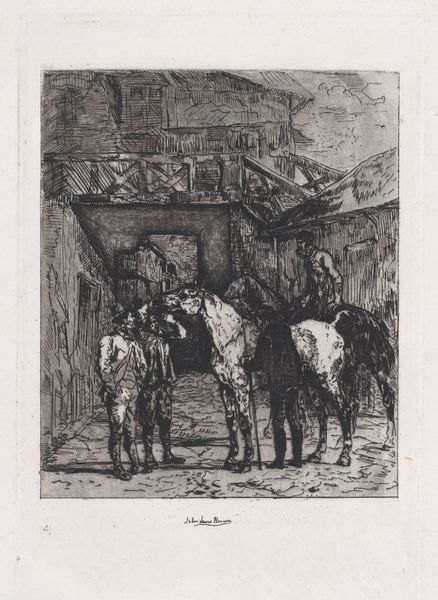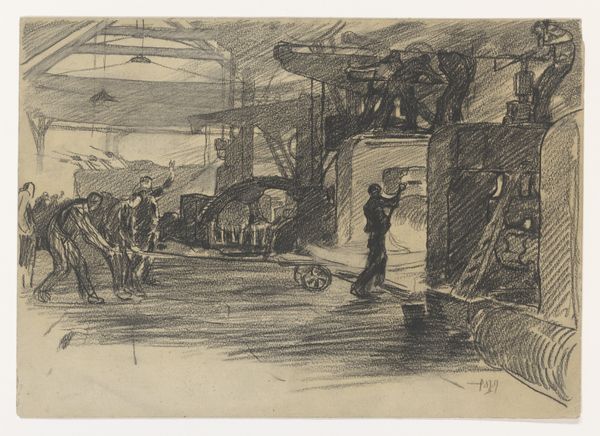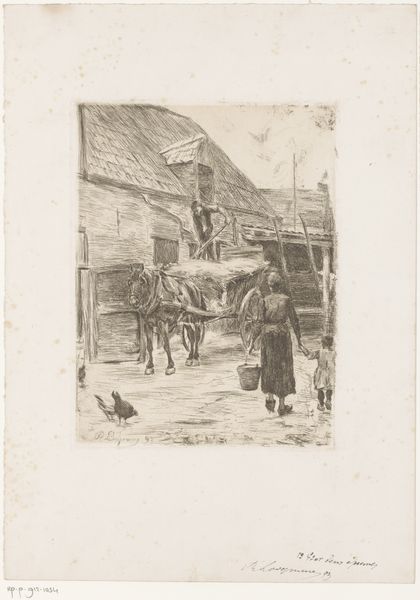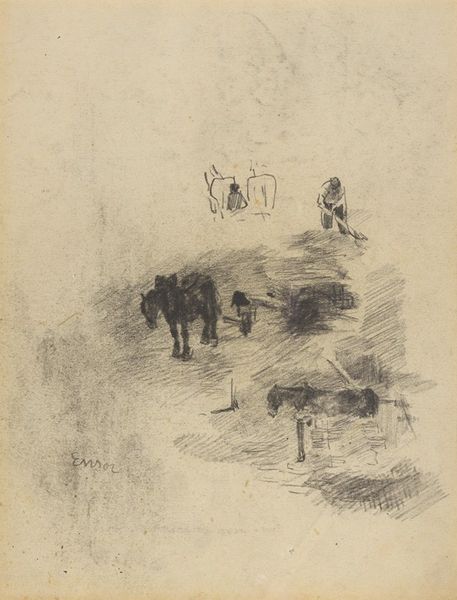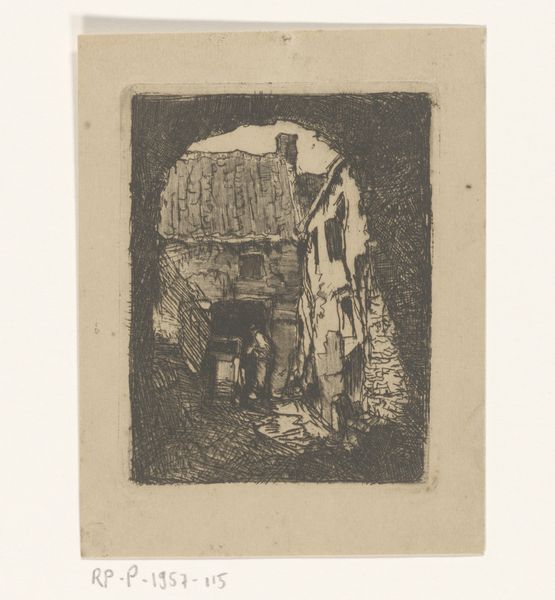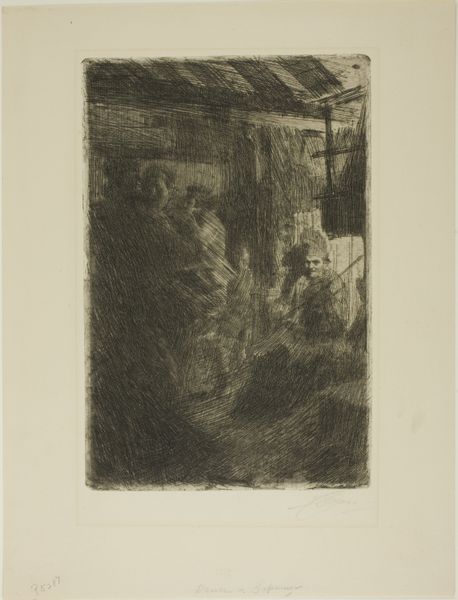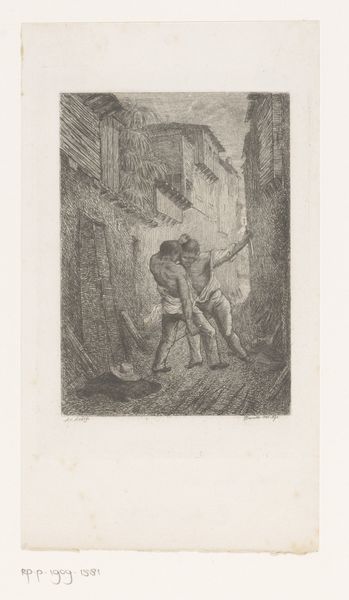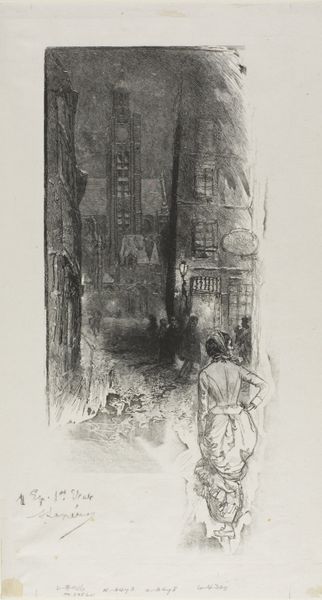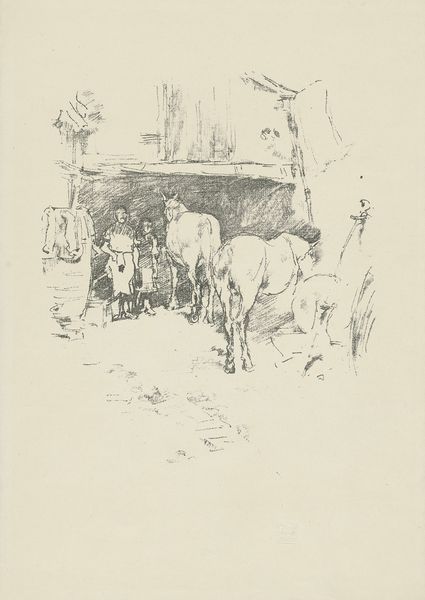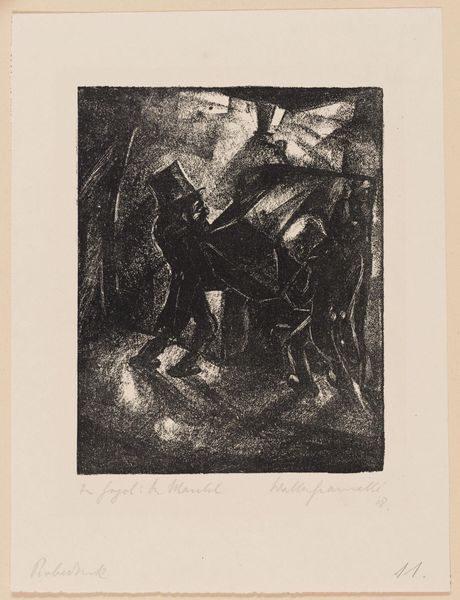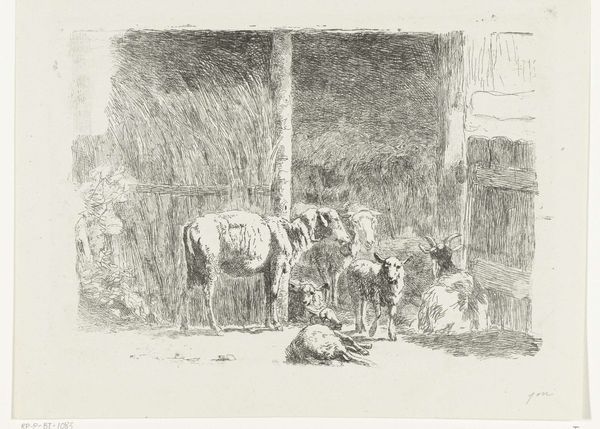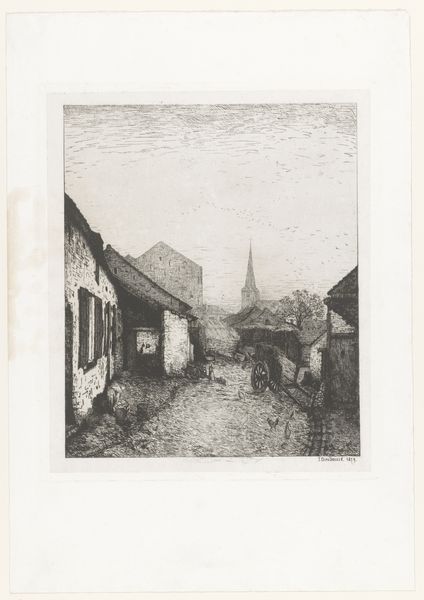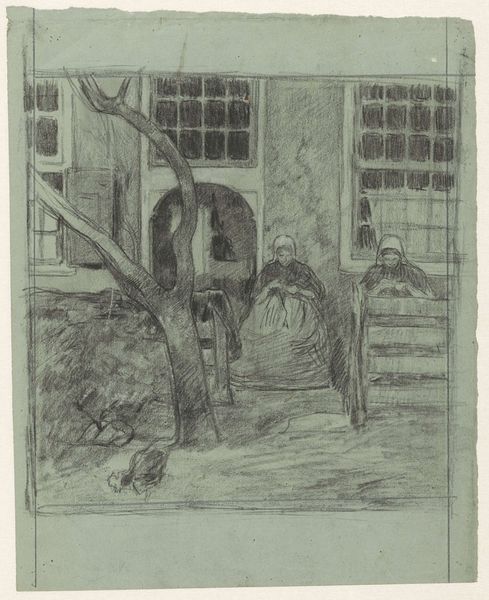
drawing, print, etching
#
drawing
# print
#
etching
#
genre-painting
#
realism
Dimensions: Image: 6 1/8 × 4 1/2 in. (15.5 × 11.5 cm) Plate: 6 5/16 × 4 11/16 in. (16 × 11.9 cm) Sheet: 17 5/16 × 12 1/2 in. (43.9 × 31.8 cm)
Copyright: Public Domain
This is Cour de Caserne, an image made by John-Lewis Brown, a 19th-century artist who captured a slice of military life through etching. The dominant symbol here, the horse, is laden with cultural weight. Since antiquity, horses have symbolized power, virility, and nobility. Their presence here, in a military context, speaks to the martial prowess and aristocratic associations of the cavalry. Think of the equestrian statues of Roman emperors or Renaissance princes – the horse elevates the rider, embodying authority and control. Yet, consider how this symbol has morphed over time. In ancient Greece, the horse was linked to Poseidon, god of the sea, representing untamed power. Later, in the Middle Ages, the knight on horseback became the epitome of chivalry. Here, the horses stand tired, still saddled, within the confines of the barracks. The scene evokes a collective memory of military might, though tempered by the mundane reality of service. The subdued light and weary animals perhaps hint at the psychological toll of military life, a powerful undercurrent in this seemingly simple scene. Thus, the horse, a cyclical symbol of power, continues to resurface, evolving, and taking on new meanings.
Comments
No comments
Be the first to comment and join the conversation on the ultimate creative platform.
